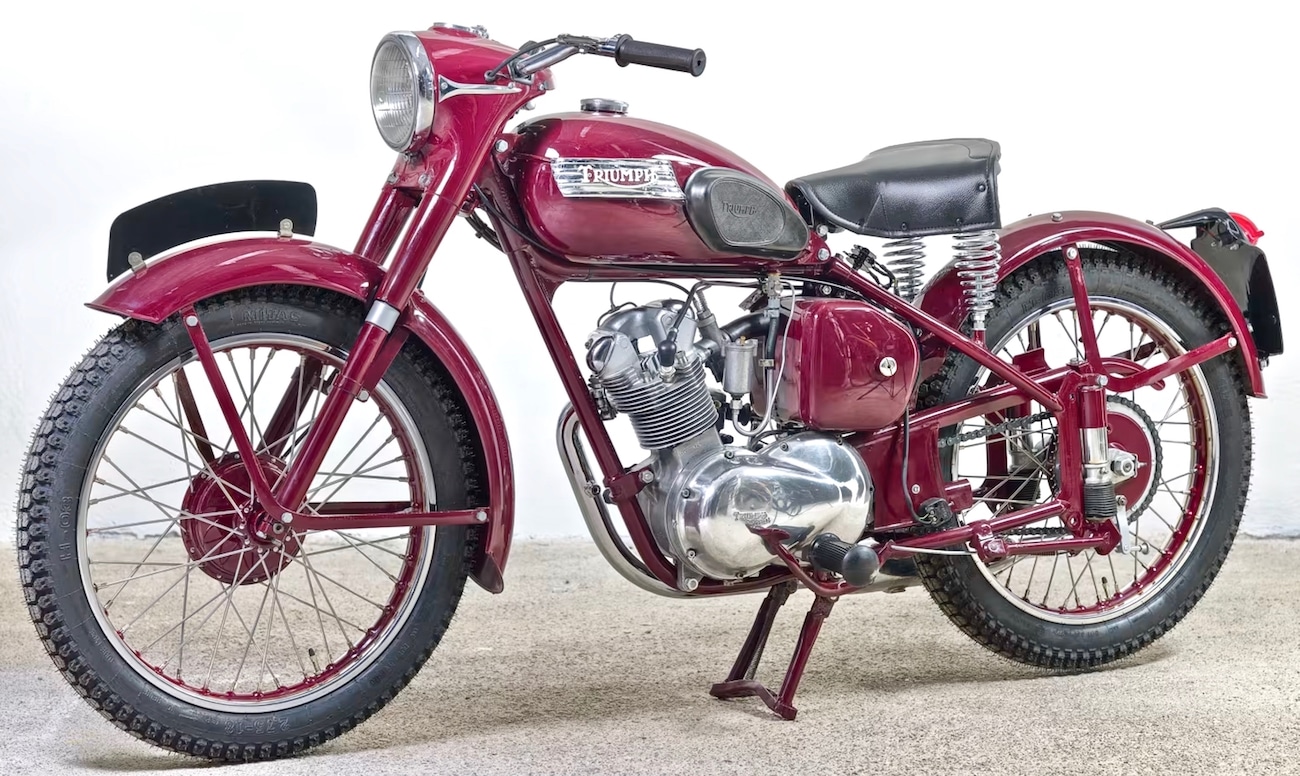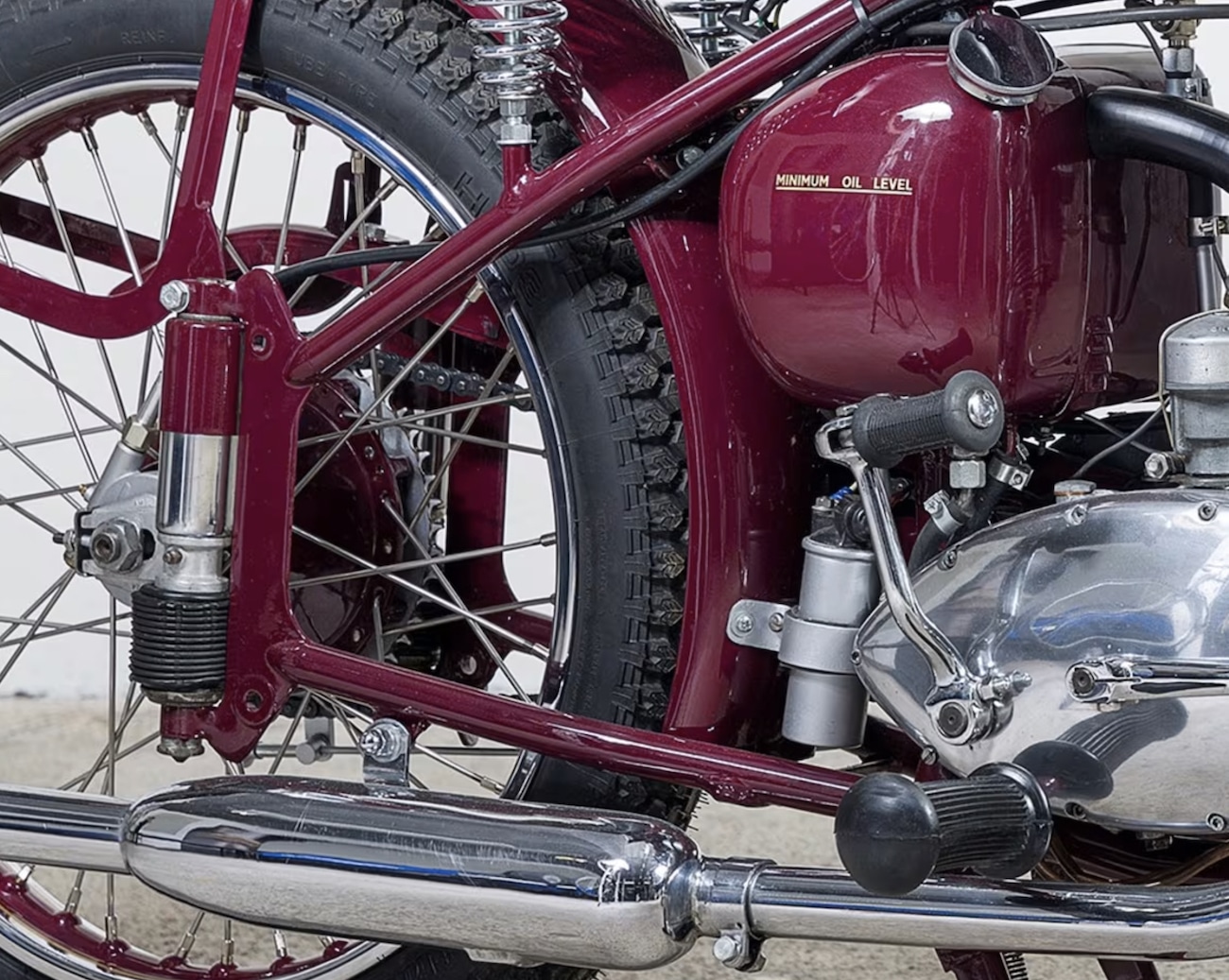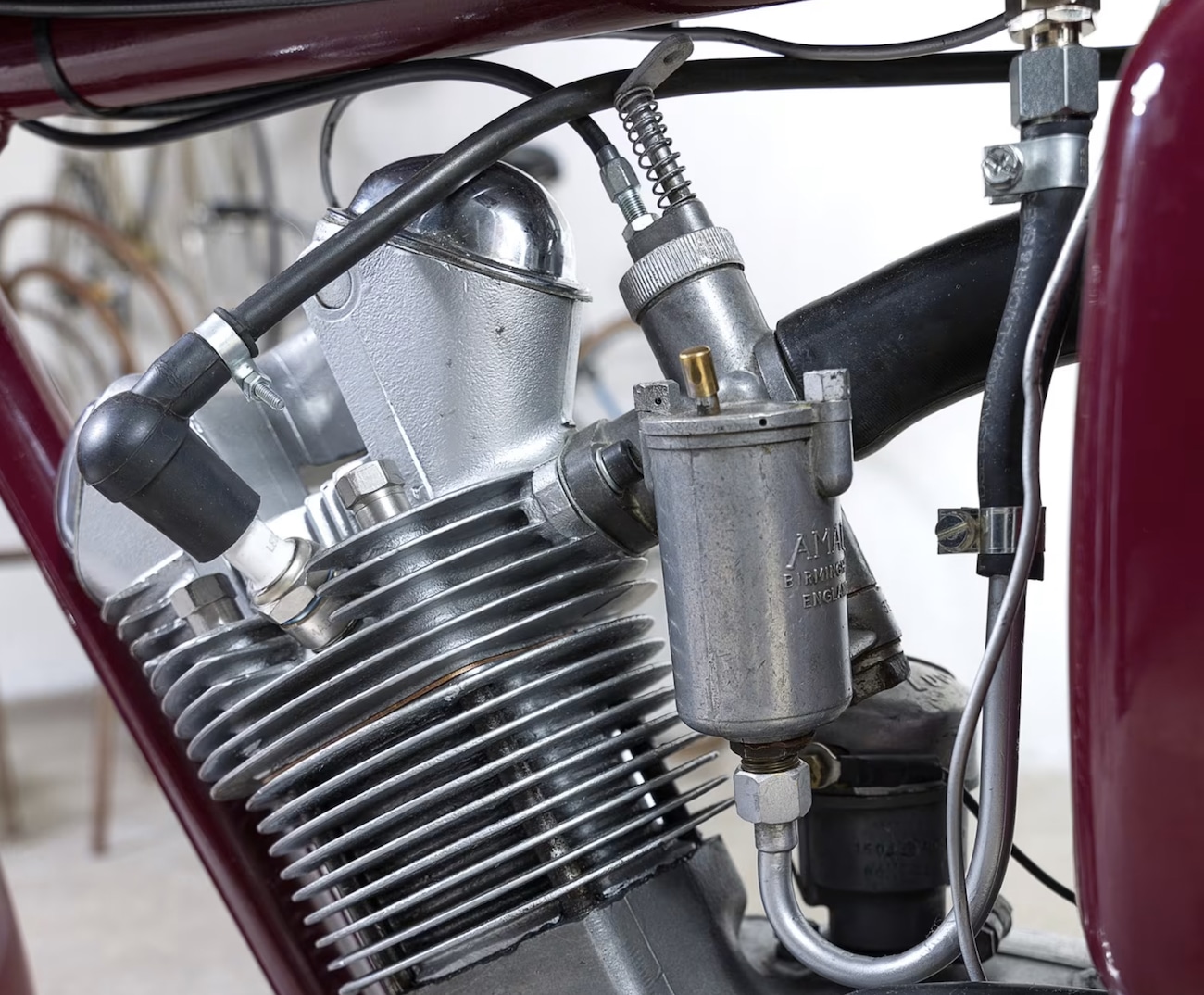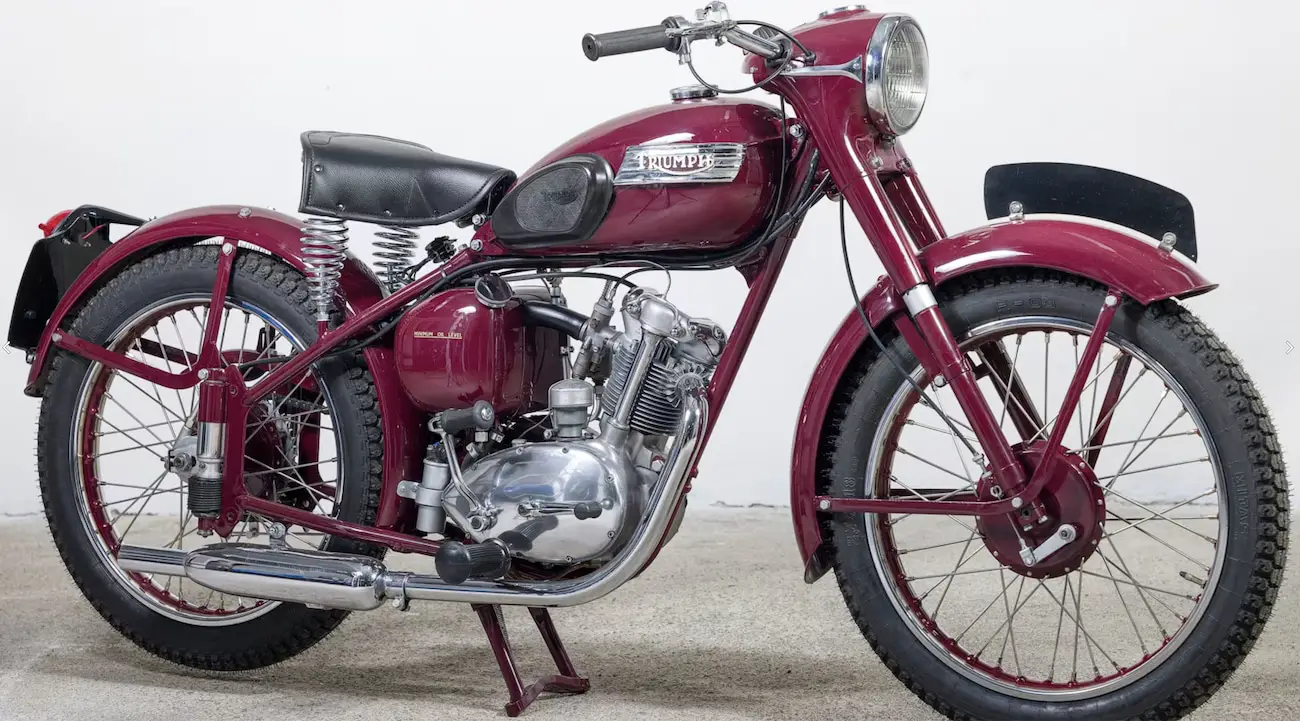CLASSIC MOTOCROSS IRON: 1954 TRIUMPH T15 TERRIER 150
 Looking like a miniature Triumph Speed Twin, right down to the same Amaranth Red color, the 150cc four-stroke sold in droves around the globe.
Looking like a miniature Triumph Speed Twin, right down to the same Amaranth Red color, the 150cc four-stroke sold in droves around the globe.
The Terrier was introduced in 1953, and it was Triumph’s first unit-construction engine, with a 149cc pushrod OHV engine that was in direct competition for sales with the small-capacity two-stroke competition using proprietary Villiers engines. Triumph’s design team consisted to Edward Turner, Harry Summers and Jack Wickes. The OHV engine of the Terrier had good performance and a propersounding exhaust note, but best of all was the styling; Turner created a miniature Triumph Speed Twin, in the same Amaranth Red color, complete with Triumph’s trademark headlamp nacelle, four-bar tank badge, ribbed fenders and overall very unified looks.
 The rear suspension was a first for a Triumph as it used a plunger shock that moved up and down with the rear wheel.
The rear suspension was a first for a Triumph as it used a plunger shock that moved up and down with the rear wheel.
The Terrier was an instant hit, being by far the best looking lightweight motorcycle of the time, it was also Triumph’s first motorcycle with rear suspension, as the Terrier used plungers at the rear end, while its larger brothers used Triumph’s “sprung hub” with their rigid frames.
 The Amal 332 carburetor was a little rough at low rpm, but worked great in the midrange.
The Amal 332 carburetor was a little rough at low rpm, but worked great in the midrange.
It wasn’t only in Great Britain where the Terrier caused a stir as Triumph dealers in America were also keen to get the new T15 Terrier in their showrooms, after it was tested in the December 1953 issue of “Motorcyclist” magazine and raced to three straight wins in scrambles races by Rod Coates at the Wild Boar Scrambles in Trenton, New Jersey, 100-mile reliabillty run in Lancaster, Pennsylvania, and a 65-miler in Philadelphia, Pennsylvania.
 Although not designed to be a race bike, the T15 Terrier held its own in scrambles until the Triumph Cub and Tiger Cub came along a few years later.
Although not designed to be a race bike, the T15 Terrier held its own in scrambles until the Triumph Cub and Tiger Cub came along a few years later.
It wasn’t until the Triumph Tiger Cub was release that the T15 Terrier had a replacement. The Terrier was taken out of production in 1956, the year before the Cub came out with rear swingarm suspension.






Comments are closed.